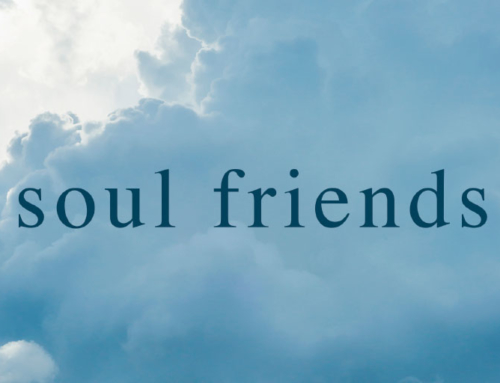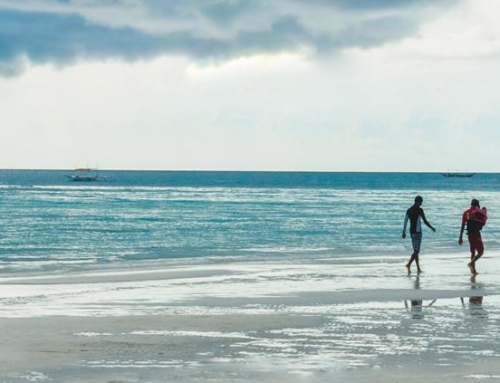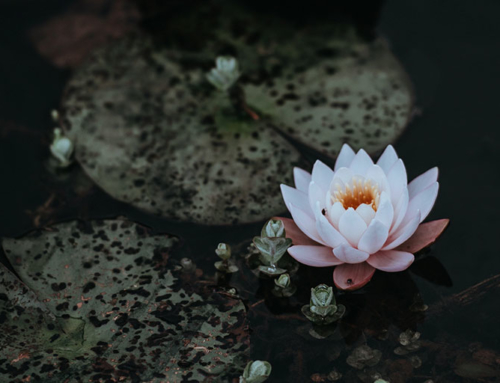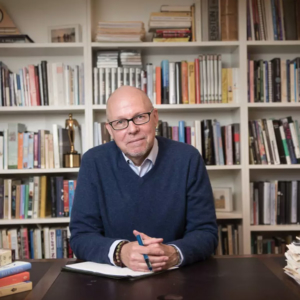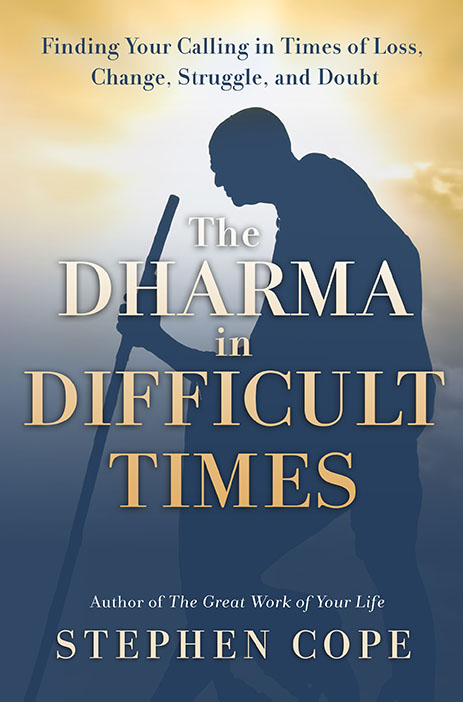By Stephen Cope – Published by Kripalu ~
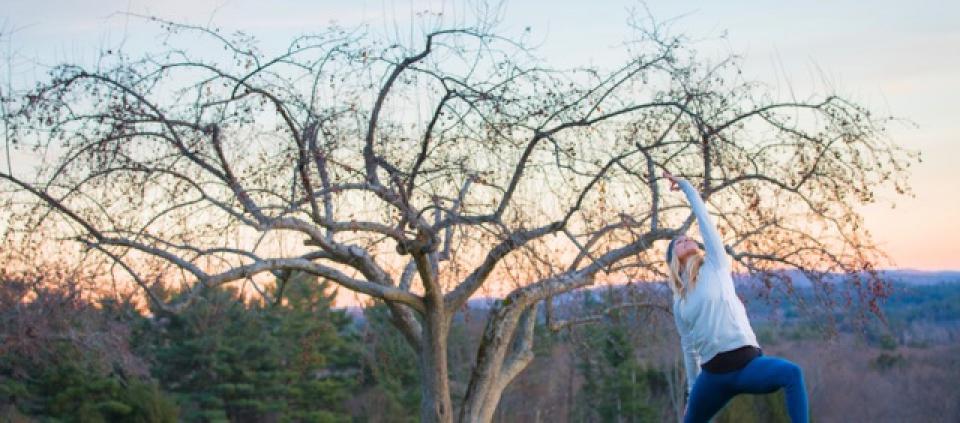 The following excerpt is taken from Stephen Cope’s well-known book, Yoga and the Quest for the True Self. In it, he guides the contemporary reader through the philosophies and practices of yoga in a thoughtful way that demystifies them and brings us to a greater understanding of ourselves.
The following excerpt is taken from Stephen Cope’s well-known book, Yoga and the Quest for the True Self. In it, he guides the contemporary reader through the philosophies and practices of yoga in a thoughtful way that demystifies them and brings us to a greater understanding of ourselves.
You see, I want a lot. Perhaps I want everything the darkness that comes with every infinite fall and the shivering blaze of every step up.
So many live on and want nothing
And are raised to the rank of prince
By the slippery ease of their light judgments
But what you love to see are faces that do work and feel thirst. You love most of all those who need you as they need a crowbar or a hoe. You have not grown old, and it is not too late to dive into your increasing depths where life calmly gives out its own secret.
—Rainer Maria Rilke, Das Stundenbuch
Waking Up
In my midthirties, I’d noticed a remarkable number of clients coming to consult me with some version of the story [my friend] Paula and I were living out. These were adults with a reasonably functional sense of self, who’d managed to establish themselves at least tolerably well in life, finding satisfying work and developing stable relationships. They often showed up at my office because they had symptoms of depression or anxiety, sometimes psychosomatic symptoms, or what appeared at first glance to be unresolved identity issues.
But while the story changed, the core problem was often remarkably similar. Some disappointment in work or in love, some illness, or some breakdown in the familiar structures of their life, or perhaps something more positive, like a love affair or a serious promotion at work, had awakened them from the trance of their daily life. A crisis had forced them to look under the surface of things. In the process of falling apart these clients had been forced to discover a richness of inner resources they had not known existed. And in the process, they found a hidden depth to themselves and the world around them.
Dennis’s fifty-million-dollar company went bankrupt just as he reached his fifty-fifth birthday. As he worked through this devastating loss over the course of two years in therapy, he discovered that in many ways it was a blessing in disguise. He was, for the first time in his adult life, free to pursue his deepest inner passion—painting. By the end of our therapy, he wondered aloud whether he might have unconsciously engineered the business failure so his soul could find its expression in art.
When Dennis came to see me, he was not sick. He simply needed support in his search for the self he had not, at first, realized he had lost. The internal structures of meaning around which he’d built a complicated and seemingly full life during his first twenty-five years of adulthood no longer served his deepest internal needs and longings. Through the apparently disastrous drama of bankruptcy, he was actually being initiated into a new but hidden aspect of his humanness.
Emily, a thirty-six-year-old physician who worked as a top administrator in a large oncology center, spent a year and a half undergoing treatment for breast cancer. Though the treatment was successful, the experience turned her life inside out, and through the course of her therapy she reevaluated her values and decisions about work. She and her family made the decision to move to their farm an hour from the city, where she set up a smaller practice, specializing in women’s medicine, and began developing the property into a working farm.
By the time he reached his thirty-fifth birthday, many of my friend Jim’s career goals had been met. He had developed his own software business, and had sold the business to an eager buyer for almost ten million dollars. Jim spent the next two years feeling anxious, depressed and restless, moving from one business pipe dream to another until, in the process of therapy, he realized that the second half of his life would look extremely different from the first half. He could not use the familiar pattern of his early adulthood to find the prototype for the second half of life. He would have to look deeper. Through a courageous inquiry, Jim discovered that his heart’s desire was to live simply in San Francisco, to teach yoga, to learn the violin, and to write the coming0-of-age novel he had had in his head for many years.
As I looked more carefully at the dilemmas of friends like Paula and Jim, of clients like Dennis and Emily, and at my own dilemmas at midlife, I discovered that for many of us, the developmental tasks of the second half of life are primarily spiritual. Carl Jung had come to the same conclusion fifty years before:
Among my patients in the second half of life—that is to say, over thirty-five—there has not been one whose problem in the last resort was not that of finding a spiritual outlook on life. It is safe to say that every one of them fell ill because he had lost the way the living religions of every age have given to their followers, and none of them has been really healed who did not regain his spiritual outlook.
Jung believed that at midlife, most of us have refined our external selves, what he called the persona, the mask we wear to assure some stable, ongoing sense of identity. In his view, the persona represents only one limited aspect of the personality and by midlife, most of us are outgrowing it. At some point during the middle years, Jung said “the glowing coals of consciousness buried deep within the personality begin to break into flames.” When this occurs, the hitherto repressed and hidden aspects of the self may seem to overwhelm the conscious self, initiating a difficult period of disorganization of the personality.
The developmental demands of this newly awakening self are enormous, but they are mostly overlooked in our culture. While the awakenings of early adulthood, which are mostly about identity, are culturally supported with rituals and celebrations—weddings, graduations, ordination, baptisms—the more subtle spiritual awakenings of the middle years are culturally invisible. Jung was outraged by this.
Are there not colleges for forty-year-olds which prepare them for their coming life and its demands as the ordinary colleges introduce our young people to a knowledge of the world? No, thoroughly unprepared we take the step into the afternoon of life; worse still, we take this step with the false assumption that our truths and ideals will serve us as hitherto. But we cannot live the afternoon of life according to the programme of life’s morning; for what was great in the morning will be little as evening, and what in the morning was true will at evening have become a lie.
Somewhere in the middle years of life, Dennis, Emily, Jim, Paula, and I were ready for a deep new pilgrimage to the center to find what Jung called “the whole self.” And for each of us in our own way, the return to the center of the self was inextricably linked with the return to God. Jung believed that the symbols for the self are indistinguishable from the symbols for God, and that the journey to the center of the self and the journey to God are one of the same. But in order to find this center it was necessary for each of us, in our own way, to deliberately enter the darkness of the unconscious, to begin what Jung called the “night sea journey.” This entry into the unknown began, for each of us, a period of disorganization and metamorphosis that would eventually allow us to accomplish the goals of the second half of life—the integration of opposites, bringing into awareness all the banished aspects of the self.
Many of us found that it was in the quiet moments of life that we picked up the thread of an altogether new sense of realness: Dennis found it in front of his canvas, Emily in quiet moments with animals and family members on her farm, Jim in his writing, Paula at Quaker meetings, and I found it in yoga. All of us discovered that when the sensory overload was turned way down, the connection with that elusive center seemed remarkably automatic. Insight arose, along with happiness and a kind of sweetness, even in the midst of pain. Many of us had brief glimpses of living in the flow of life, reconnected to the sources of our energy. We wanted more. Perhaps, in the words of Rilke’s poem, we wanted everything.

